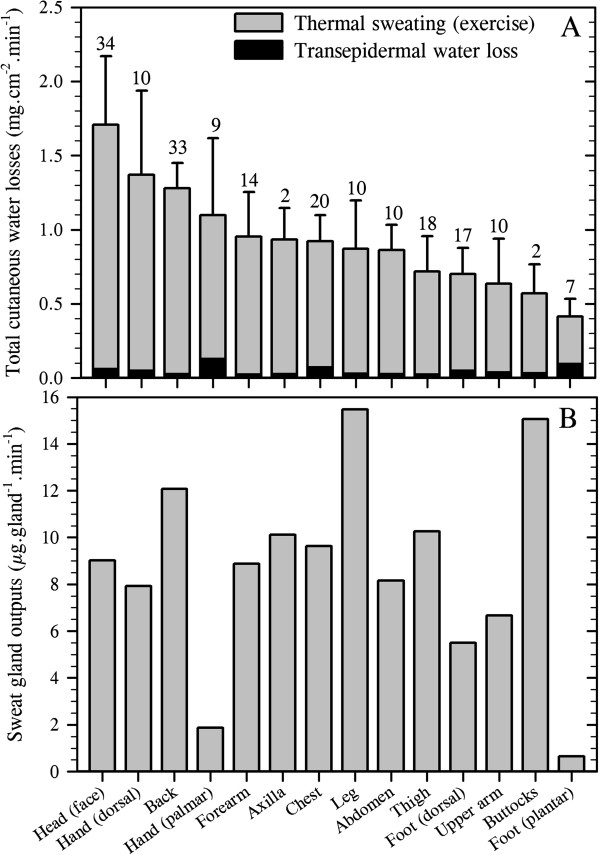Figure 5.
Total cutaneous water loss and sweat gland output during dynamic and static exercise. (A) Regional variations in total cutaneous water loss (descending order) and (B) sweat gland output (ordered as in A). (A) is a summation of transepidermal water loss (averaged from Figure 1: dorsal foot was assumed to equal the dorsal hand) and thermal and non-thermal sweating. Data are means (with 95% confidence intervals across studies) derived from 20 studies (214 subjects: numbers are data sets used for each site), with an average sweat rate across all sites and studies of 0.89 mg.cm−2.min−1. For simplicity, all anterior surfaces of the head were included within the face. For the limbs, data from all surfaces were combined, while the hands and feet were separated according to their dorsal and volar surfaces, with data obtained from the fingers and toes included within those surfaces. Data for the buttocks came from only one study. Site-specific sweat rates were computed as follows: regional sweating = ((N1 × SR1) + (N2 × SR2) + … (Ni × SRi)) ∕ NTotal (where N is the sample size, SR is the sweat rate and subscript numerals refer to separate studies). (B) shows variations in sweat gland output, derived by combining data from Figures 2B and 5A. Sources: Taylor et al. [61], Machado-Moreira et al. [62], Sato and Dobson [85], Patterson et al. [156], Weiner [164], Patterson et al. [191], Havenith et al. [192], Smith et al. [194], Takano et al. [208], Kondo et al. [87], Smith and Havenith [233], Machado-Moreira et al. [224], Machado-Moreira et al. [225], Gordon [227], Höfler [234], Ayling [235], Cabanac and Brinnel [236], Libert et al. [237], Cotter et al. [238] and Cotter et al. [239].

